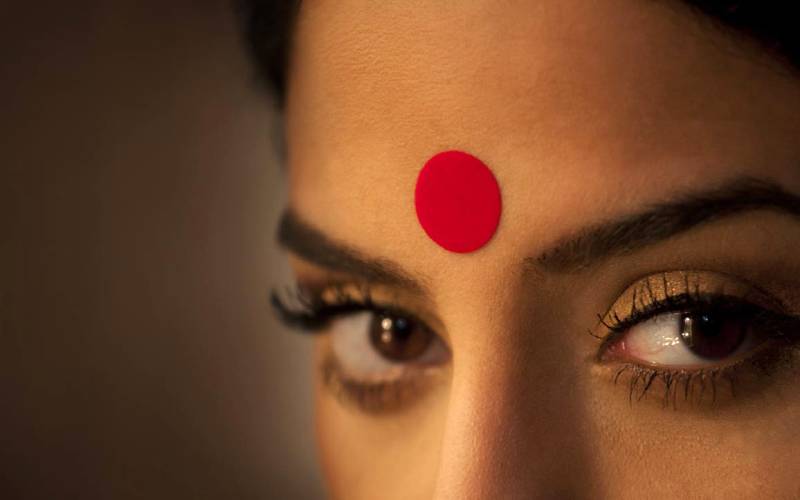
India is not only a land of mystics and myths, But a land of meaningful culture, practices and wisdom. This Indian wisdom leads a human towards self-realisation and higher consciousness. One such positive and beneficial aspect of our culture is the women adorning themselves with a bindi.
Traditionally, a bindi is a small red-coloured dot worn by the women between the eyebrows on the forehead. Bindi is derived from the Sanskrit word bindu meaning, a drop or a dot. Women all over India embrace the bindi. It is in fact known by many different names such as pottu, bottu, sindoor, kumkum etc. in different regions of the country.
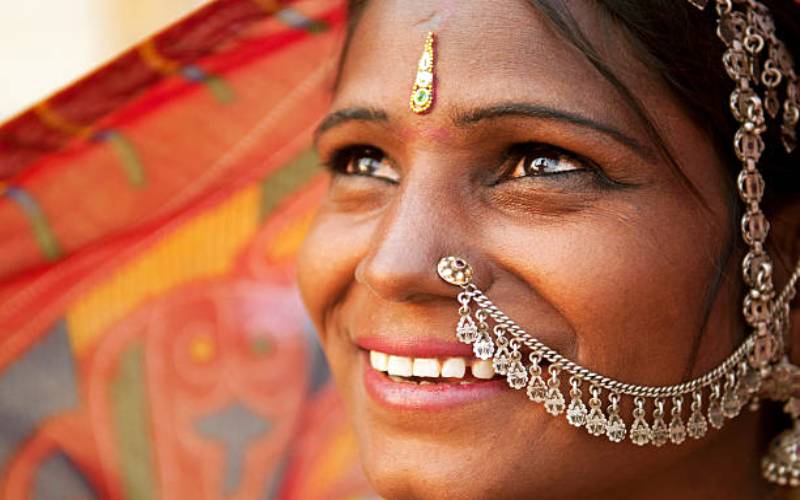
Traditional Bindi
Traditionally, bindi was made from vermilion, sandalwood paste, turmeric, saffron or sometimes even ash. It is a symbol of marital status in women along with the sindoor on the hair partition. During all Hindu marriages, the groom applies sindoor in the partition on the forehead of the bride. It was a sign of well-being and life-long commitment.
A traditional bindi is in red or maroon. First, a sticky wax-like paste is applied skilfully on the forehead, and then using the ring finger, a pinch of vermilion powder is applied to it to make a perfect dot.
There are regional variations of the bindi as well. For example, in Maharastra, a crescent-moon-shaped bindi is worn, and in some places, elongated thilak-shaped bindi is famous as well.
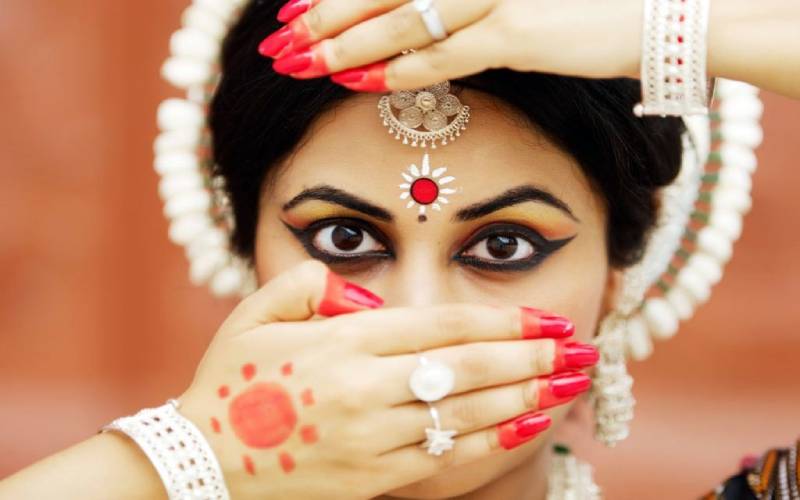
Why is Bindi Placed on the Forehead?
The holy Vedas have described explicitly about the concentrated places of energy in one’s body. These energy centres are known as chakra-s. There are 7 chakra-s in a human body, and the sixth chakra is found on one’s forehead. This chakra is called the Aagnya.
The Aagnya Chakra is very significant because it is the place where Ida and Pingala Nadi-s merge with Sushumna.
In Hindu tradition, people believe in the third eye. Two physical eyes enable a human to see worldly things, and there is a third eye which when focused inwards will lead one towards attaining Godhood. This third eye is exactly where Aagnya Chakra is situated, and it is the exact spot where one applies the bindi. So, one can say that bindi has a very spiritual significance. In fact, it acts as a reminder of the connection with the higher consciousness and intuition.
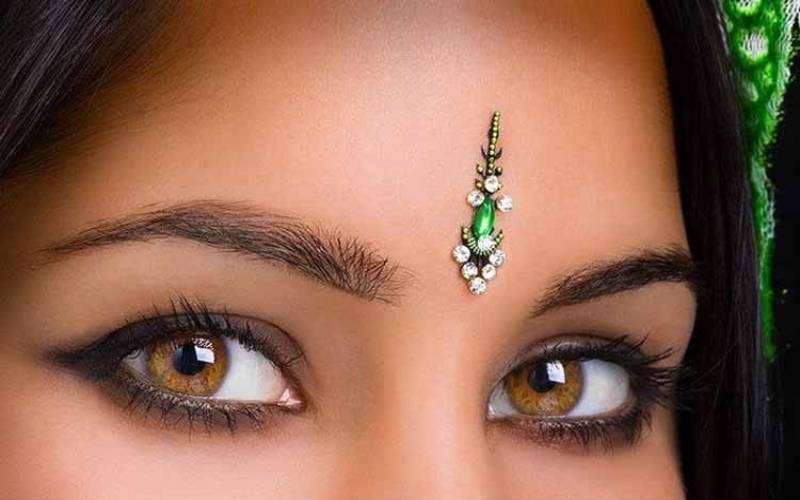
Significance and Benefits of Wearing a Bindi
A bindi is said to retain energy and enhance concentration. Every morning, the Hindus take bath and sit in prayer. After the bath, they normally mark their foreheads with sandalwood paste or vermillion. Although they cannot see this mark on their forehead, they notice the mark on their friend's forehead. This serves as a reminder of their dharma and God.
Bindi is applied between the eyebrows where the Pineal gland is situated. This is a very important nerve centre that helps regulate the production of melatonin and other hormones for the wellbeing of one’s body. When a person applies bindi on the forehead, it activates this centre.
To cool one's body, people usually apply sandalwood paste on their forehead. This act helps the nerves to cool down, and it also aids in conserving energy.
Also, there is an ancient practice of applying black bindi on an infant’s forehead, cheeks and sometimes even the feet. This is very significant as it wards off Kanndrishti (Evil sight) from the infants. Every home made these special bottu/bindi for their infants at home from Sabudana (Sago).
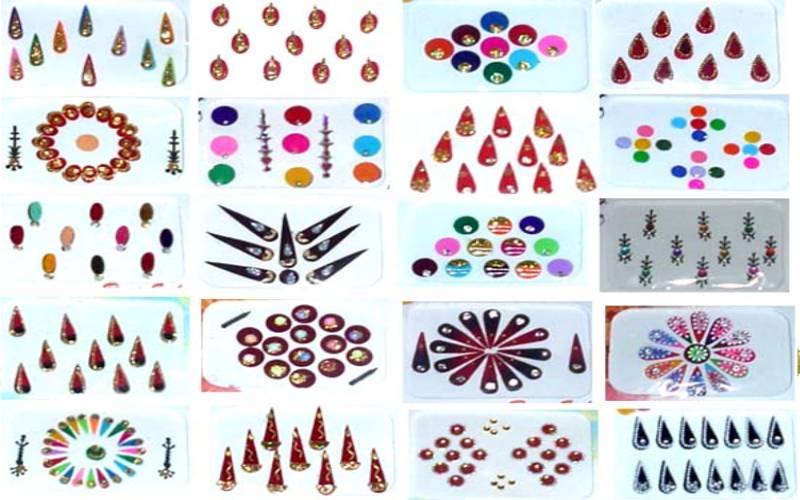
Homemade Indian Pottu/Bindi for Babies
The skin of the infant is very delicate, and hence most of the households make their black bottu at home for their babies. It is a fairly easy process, and the grandmothers are very quick at making the bindi. To make the bindi-s, sabudana is dried, and roasted on a thick-bottomed-pan until they turn darkish brown, then water is added to it while stirring. It then turns into black liquid which when cooled will thicken. This paste is stored in coconut shells or glass bottles and used every day.
Here is one of the traditional ways of making black bindi for infants and children.
Ingredients needed
How to proceed

Bindi is indeed a huge market in India. Nowadays, this black bindi for infants is available in some shops. Also, many brands have developed colourful bindi-s that are ready to stick and use for the women. The bindi-s come in all sizes and colours. It has also become a fashion statement.
One can only hope that the users know the real benefits of applying bindi before they pass on the tradition and practices to the next generation. This way the younger generations will realise the real significance and importance of their culture and will surely hold their head high because they belong to such a scientifically advanced country and culture.
 I am Vaishnavi Gurusankar, a passionate educator, a wife and a mother. I have over a decade of experience as an educator and have been closely working with teachers and children of all ages. I am also an active parenting blogger and founder of Magical Unicorn, an exclusive parenting blog founded on Indian ethos, values and stories at its core.
I am Vaishnavi Gurusankar, a passionate educator, a wife and a mother. I have over a decade of experience as an educator and have been closely working with teachers and children of all ages. I am also an active parenting blogger and founder of Magical Unicorn, an exclusive parenting blog founded on Indian ethos, values and stories at its core.
NEXT ARTICLE

At the southernmost tip of this mesmerising ensemble lies the majestic Great Nicobar Island, boasting an impressive landmass of about 910 square kilom...

Bharath has always been a land traversed by spiritual masters/ Guru since time immemorial. These spiritual masters have always upheld the core princip...

South India contains its fair share of unique pilgrimage centres. These divine places of worship have a prominent Sthala Purana, devoted followers, di...